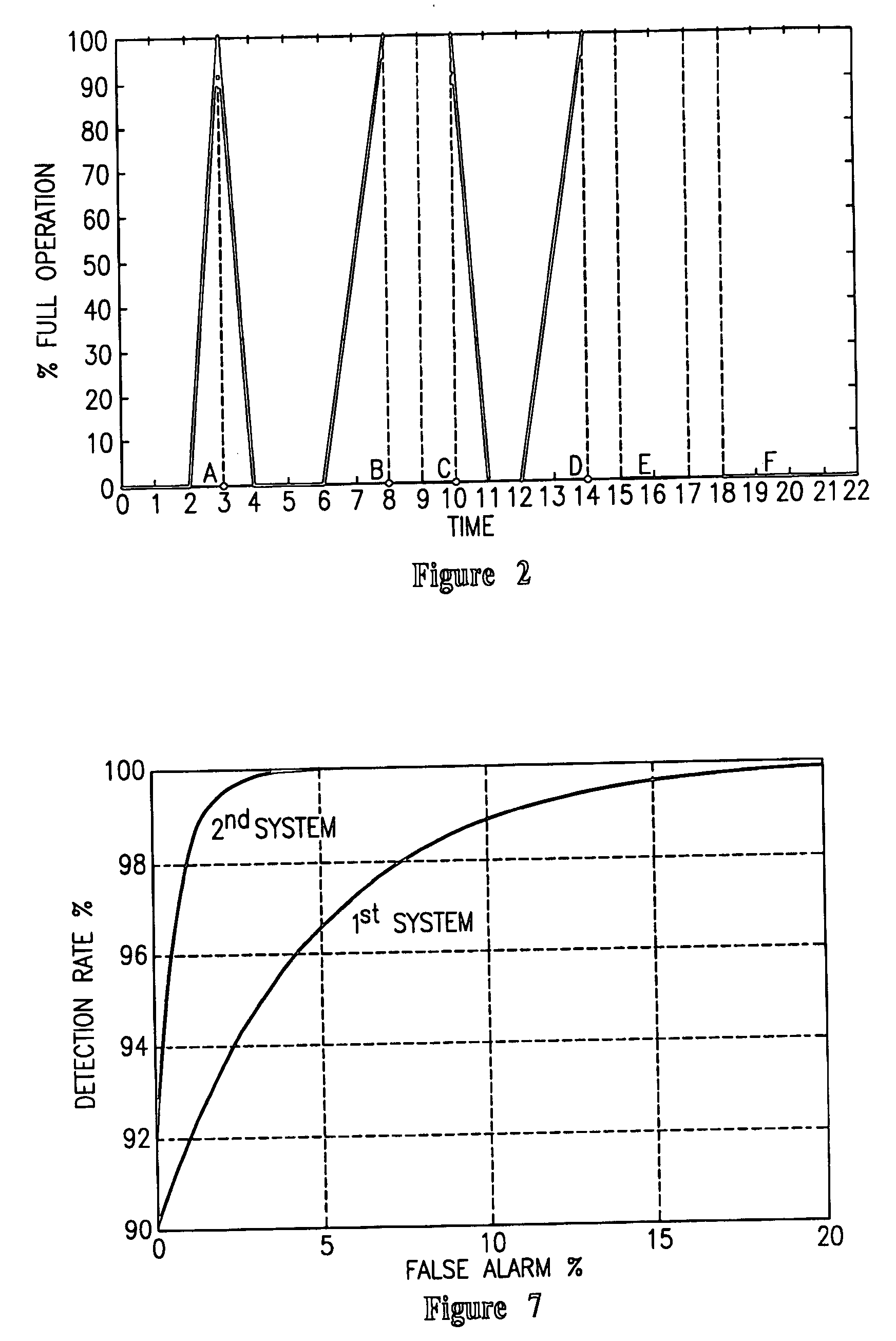Fault diagnostics and prognostics based on distance fault classifiers
a technology of fault classification and fault diagnosis, applied in the field of fault diagnosis, can solve the problems of adversely affecting system performance, life cycle cost, and often costly, and achieve the effect of easy interpretation, calibration and implementation
- Summary
- Abstract
- Description
- Claims
- Application Information
AI Technical Summary
Benefits of technology
Problems solved by technology
Method used
Image
Examples
Embodiment Construction
[0022]FIG. 1 is a schematic illustration of an example HVAC system 10 according to the present invention. In this example, the HVAC system 10 is a duct-free heat pump system known as a multi-modular split system (MMS). The MMS 10 includes one outdoor unit 12 and two indoor units 14A and 14B, which operate in a cooling mode to provide cool air to an interior space during a warm or hot season and a heating mode to provide warm air to the interior space during a cool or cold season.
[0023]The outdoor unit 12 includes a pair of parallel compressors 16, which are variable speed, an outdoor expansion valve 18 to control a sub-cool in the cooling mode and to control a superheat in the heating mode, an outdoor heat exchanger 20, which behaves as a condenser in the cooling mode and as an evaporator in the heating mode, and an outdoor fan 22.
[0024]Each of the two indoor units 14A and 14B includes an indoor expansion valve 24, to control the sub-cool in the cooling mode and superheat in the hea...
PUM
| Property | Measurement | Unit |
|---|---|---|
| threshold | aaaaa | aaaaa |
| distance | aaaaa | aaaaa |
| suction pressure | aaaaa | aaaaa |
Abstract
Description
Claims
Application Information
 Login to View More
Login to View More - R&D
- Intellectual Property
- Life Sciences
- Materials
- Tech Scout
- Unparalleled Data Quality
- Higher Quality Content
- 60% Fewer Hallucinations
Browse by: Latest US Patents, China's latest patents, Technical Efficacy Thesaurus, Application Domain, Technology Topic, Popular Technical Reports.
© 2025 PatSnap. All rights reserved.Legal|Privacy policy|Modern Slavery Act Transparency Statement|Sitemap|About US| Contact US: help@patsnap.com



